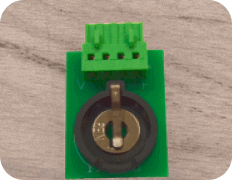
One of the biggest challenges in the development and optimization of battery technology is difficulty in observing what’s happening inside of the battery itself.
However, there’s a new ally in the movement toward the future of energy storage – magnetic resonance imaging, also known as MRI. This technology, which commonly conjures up images of medical diagnosing equipment, allows researchers to diagnose any happenings inside of current lithium-ion (Li-ion) batteries and aids in the development of what may be the battery of the future, sodium batteries.
Lithium-Ion Diagnosis via MRI
As portable technology advances and changes in form factor, new challenges arise in the shape and size of the required Li-ion batteries for these devices. Over the past years, stories have dotted the news about battery malfunctions, including overheating, swelling, and even explosions. Unfortunately, examination and diagnosis of any problems that might be occurring within a battery is almost impossible without destroying the battery in question.
That’s where MRIs come in. The technology is used to measure miniscule alterations in a magnetic field map, which is perfect for analyzing the workings of a battery while it’s in motion.
Using MRIs, researchers are able to determine charge states and an assortment of defective or missing components that might occur during manufacturing. These diagnoses can then be implemented in improving the batteries, reducing failure rates, and improving performance.
Sodium Monitoring with MRI
One of the leading candidates to replace the current Li-ion batteries, sodium batteries, has a promising future in the evolution of alternative energy devices and technology. However, understanding the inner workings of sodium batteries also presents the same problems as diagnosing the processes within Li-ion batteries – you simply can’t observe the innards in motion without destroying the battery.
Fortunately, a process has been developed using MRIs to detect and track the movements of sodium metal ions, allowing researchers to get a look at what’s happening inside of sodium batteries while it’s happening. This observation method offers a way to monitor the interactions between sodium and various anode and cathode materials, as well as the growth of branching structures called dendrites that might cause the battery to fail or even catch fire.
With the interactions within the sodium batteries visible, scientists will be able to detect failures and develop ways to prevent those failures, all while optimizing the capabilities of sodium battery technology.
Battery Technology for Today and Tomorrow
With these relatively recent applications of MRI technology in the fields of energy storage and optimization, new paths for advancement have opened before our very eyes.
Not only does using MRIs for looking into the inner machinations of working batteries allow us to see on a whole new scale, it also allows us to glimpse into the future of energy.
To learn more about how Arbin is supporting that future, visit https://www.arbin.com/.






